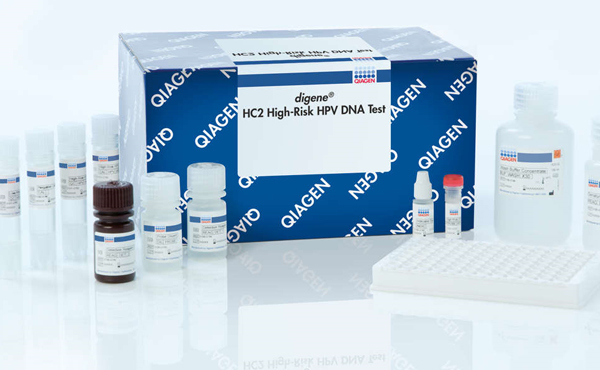Cervical cancer is the second most common form of cancer in women worldwide. It is a serious threat to women's life and health. High-risk HPV (human papillomavirus) infection is the cause of cervical cancer. HC2 HPV DNA Test is the first HPV test approved by US FDA using the key hybrid capture technology.
HC2 HPV is the gold standard for HPV detections worldwide because of its high clinical sensitivity and specificity.
HC2 HPV screening data is the key resources in the development of HPV primary screening guidelines around the world.
HC2 HPV has screened millions of women worldwide and saved thousands of lives.


HC2 HPV is the most clinically validated test with an outstanding clinical performance:
1.Best clinical sensitivity for protection: 94-100% clinical sensitivity1, almost no missed case.
2. Best NPV for safety: 99.9% negative predictive value2, negative is true negative.
3. Accurate clinical cutoff: 1.0 pg/ml, recommended by the WHO guidelines3.
4. User friendly and robust: no DNA extraction and amplification.
Women who are recommended for the test:
1. Women over age 25 (screening population).
2. Woman with cytology results of ASCUS or LSIL (cytology triage).
3. Women after cervical lesions treatment (follow up).
1.Best clinical sensitivity for protection: 94-100% clinical sensitivity1, almost no missed case.
2. Best NPV for safety: 99.9% negative predictive value2, negative is true negative.
3. Accurate clinical cutoff: 1.0 pg/ml, recommended by the WHO guidelines3.
4. User friendly and robust: no DNA extraction and amplification.
Women who are recommended for the test:
1. Women over age 25 (screening population).
2. Woman with cytology results of ASCUS or LSIL (cytology triage).
3. Women after cervical lesions treatment (follow up).
1. Lancet Oncol. 2010 Dec;11(12):1160-71.
2. Lancet Oncol. 2008 Oct;9(10):929-36.
3. WHO guidelines for screening and treatment of precancerous lesions for cervical cancer prevention. World Health Organization 2013.
2. Lancet Oncol. 2008 Oct;9(10):929-36.
3. WHO guidelines for screening and treatment of precancerous lesions for cervical cancer prevention. World Health Organization 2013.




